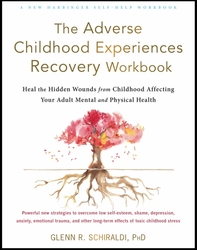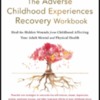Glenn R. Schiraldi, Ph.D. Psychology Today blog post, February 6, 2023
This post is part of a series on adverse childhood experiences. Read the other parts here.
Adverse childhood experiences (ACEs) can reveal strengths (such as, “I discovered I had the inner strength to get through this.”). They also provide opportunities to become more resilient.
Resilience refers to those inner strengths that enable you to respond well to adversity. You’ve already shown resilience by surviving childhood adversity. And you can build upon your innate strengths. There are three aspects of resilience.
- Resistance refers to the strengths and skills that prevent the development of stress-related conditions such as depression, anxiety, PTSD, and drug abuse.
- Recovery refers to bouncing back from such conditions.
- Optimizing mental health and performance—bouncing forward after adversity—is the process of flourishing, or creating a satisfying life.
In past posts we’ve explored many recovery skills. Now we’ll explore bouncing forward, using the strength you’ve gained to anticipate and enjoy a brighter future—a future of flourishing, thriving, being your best, creating a life that is satisfying.
The great news is that your magnificent brain is plastic, capable of being rewired so that old, unpleasant neural programming—perhaps learned from troubled caregivers or in response to overwhelming adversities— is replaced by new, pleasant neural pathways.
If you’ve applied the strategies discussed in past posts, you’ve learned how to come to peace with the past, for example, by healing and reworking old wounds, managing the physical and emotional arousal that prevents the brain from functioning properly, forgiving, and so forth. Many of the skills you’ve learned will facilitate the process of designing and enjoying a bright future. Here are several strategies (Schiraldi 2021).
Start with the Body
Consistent with the body-centered approaches we’ve explored, a simple and effective way to begin is to imagine yourself walking in the future, relaxed and poised (Ogden and Fischer 2015; Shapiro 2012). Your movements are graceful and fluid. Your posture is comfortably erect, your chest is expanded, and your chin is raised as you look confidently ahead. You are alert to all that is pleasant around you. There’s a bounce in your step. All your movements reflect your intrinsic worth and optimism. The next time you are walking outside, relax, breathe, and try walking this way—tracking what happens in your body and emotions.
Create New Patterns
As we face new situations in life, it’s normal to feel a mix of optimistic anticipation and anxiety. Alongside the possibility of finding enjoyment is the possibility of stumbling unpleasantly. Anxiety can also stir up unpleasant images, emotions, sensations, or thoughts from the past. This strategy is a great opportunity to rewire your brain.
- Think of all the unpleasant images, emotions, sensations, and thoughts that arise as you anticipate a new situation (for instance, “When meeting new people, I see my caregiver’s judgmental face and hear critical comments. My stomach and shoulders tighten.”).
- With great compassion, understanding, and acceptance, name the unpleasant images, emotions, sensations, and thoughts. For example, “There is fear of being judged; my body understandably tightens up in response.”
- Briefly describe how you would like to feel (for example, “I’d like to feel at ease and confident—enjoying this moment.”).
- Design the desired response. Direct your awareness to new images, emotions, sensations, and thoughts. For example, “I see myself approaching a new person in a friendly, relaxed way, thinking that we both want to enjoy a pleasant interchange. My face has a cheerful expression. I show genuine interest. I’m thinking that it’s perfectly natural to feel a bit anxious; that’s human nature. But this could be fun. The butterflies in my stomach turn into curiosity and delight.”
- Mentally rehearse. See yourself in the future responding to the new situation with this new pattern that you’ve designed, reminding yourself that this is a learning process; it takes time and practice to improve. Bring kindness to this rehearsal. See yourself enjoying the moment. Repeat the practice several times with the new images, sensations, emotions, and thoughts. Make sure the practice has a beginning, middle, and end. Track the sensations and emotions and notice if they shift with each rehearsal.
- Practice this new approach in real life. You might apply your self-compassion skill. (“This is a moment of suffering. Suffering is part of life. May I bring great compassion to this moment.”) Give yourself partial credit for each attempt (for instance, “All in all, not bad”).
This strategy can be applied to any old habit or pattern that you’d like to change.
Carry a Resource Person with You
In this strategy (Ogden and Fisher 2015) you will practice carrying a positive attachment relationship as you walk through the future—a relationship that provided comfort, security, and the feeling that you were not alone. Who comes to mind when you think of such a relationship? It might be a kind grandparent, neighbor, teacher, friend, spiritual being, and so forth. In writing, name that individual and describe how that being made you feel in specific situations (such as, safe, secure, protected, loved, or valued). Notice that being’s countenance/expression. Track how that being made you feel in your body and emotionally. Notice the thoughts engendered (such as “I matter, I’m safe, I’m worthwhile.”).
Next, imagine that individual being with you as you walk through the future. Track how it feels to know you are not alone.
Please know that there are many other skills that can help us create a satisfying future, including finding meaning and purpose and growing happiness (Schiraldi 2017). Indeed, there is much reason to hope for a brighter future.
Remember to Use the Skills You’ve Learned
Moving forward into the future, you now have skills that you perhaps lacked before, such as self-compassion, mindfulness, regulating unpleasant emotions, body-centered skills to regulate stress arousal, and self-esteem and forgiveness skills. Review these skills and remember to practice them when you feel troubled. Don’t hesitate to seek the assistance of a mental health professional specializing in trauma if you feel stuck or in need of additional support.
The next post will explore a very promising new treatment for survivors of ACEs.
References
- Schiraldi, G. R. (2021). The Adverse Childhood Experiences Recovery Workbook: Heal the Hidden Wounds from Childhood Affecting Your Adult Mental and Physical Health. Oakland, CA: New Harbinger Publications.
- Schiraldi, G. R. (2017). The Resilience Workbook: Essential Skills to Recover from Stress, Trauma, and Adversity. Oakland, CA: New Harbinger Publications.
- Ogden, P., and J. Fisher. (2015). Sensorimotor Psychotherapy: Interventions for Trauma and Attachment. New York: W. W. Norton.
- Shapiro, F. (2012). Getting Past Your Past: Take Control of Your Life with Self-Help Techniques from EMDR Therapy. New York: Rodale.
About the Author
Glenn R. Schiraldi, PhD, has served on the stress management faculties at The Pentagon, the International Critical Incident Stress Foundation, and the University of Maryland, where he received the Outstanding Teacher Award in addition to other teaching/service awards. His fourteen books on stress-related topics have been translated into seventeen languages, and include The Adverse Childhood Experiences Recovery Workbook, The Self-Esteem Workbook. The Resilience Workbook, and The Post-Traumatic Stress Disorder Sourcebook. The founder of Resilience Training International (www.ResilienceFirst.com), he has trained laypersons, emergency responders, and clinicians around the world on the diverse aspects of stress, trauma, and resilience.
Title image photo credit: KAR-TR/istockphoto.com



Comments (0)